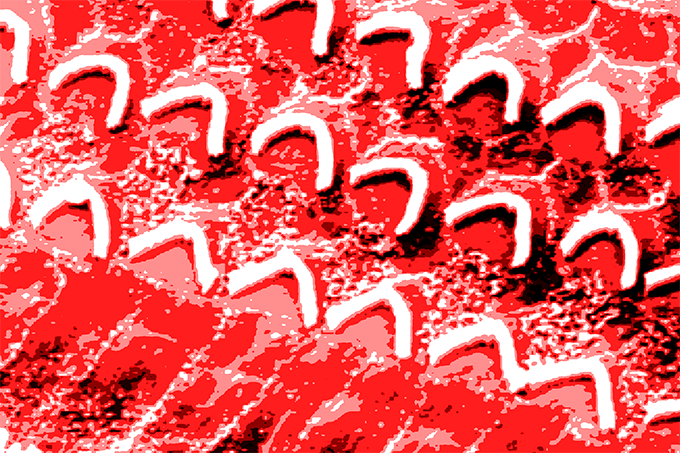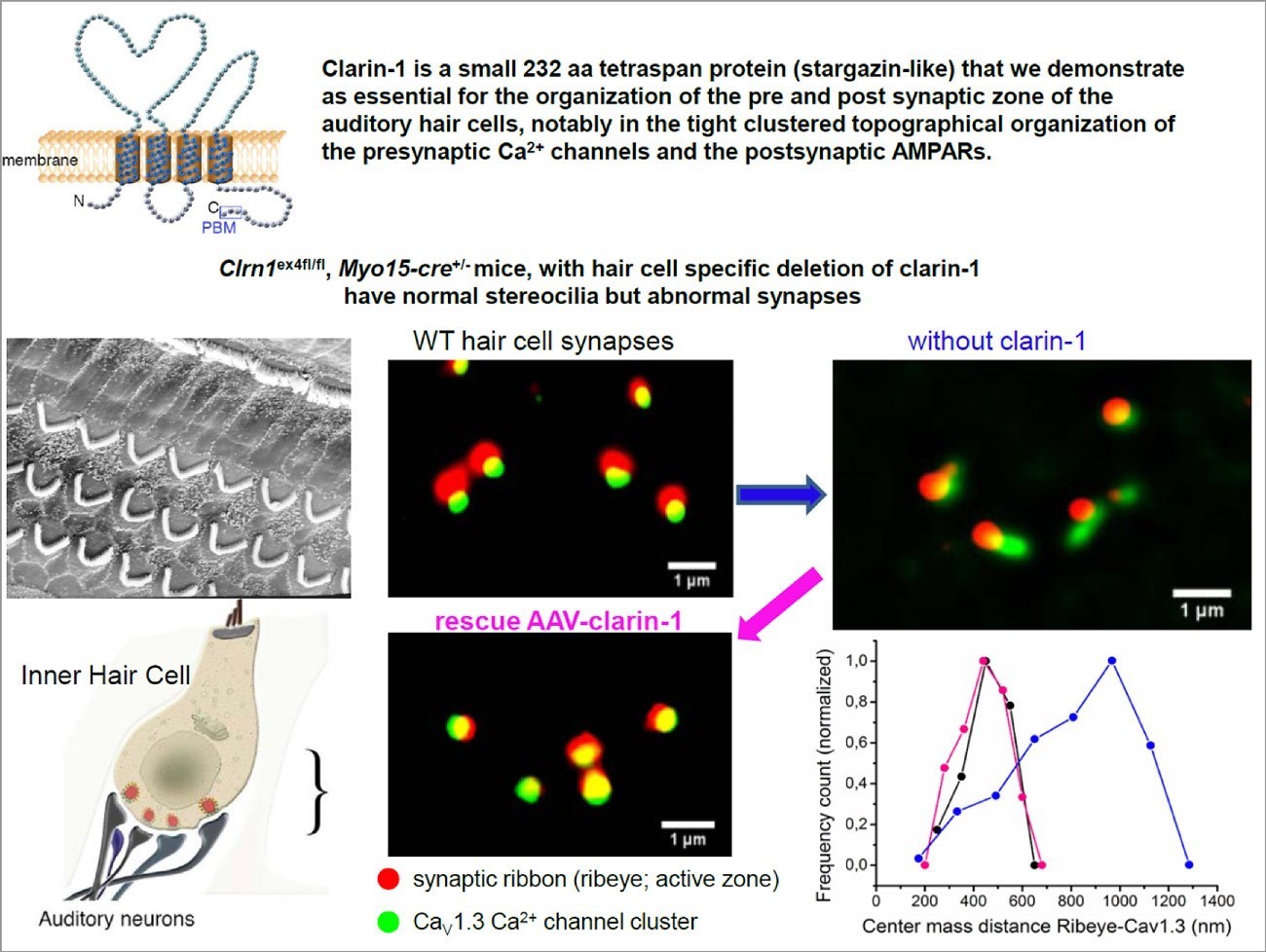
Didier Dulon et al. in Journal of clinical investigation
Clarin-1 gene transfer rescues auditory synaptopathy in model of Usher syndrome. . Didier Dulon, Samantha Papal, Christine Petit, Aziz El-Amraoui et al.The Journal of clinical investigation, on line July 9,2018
Didier Dulon: UMRS 1120, French National Institute for Health and Medical Research (INSERM), Paris, France / University of Bordeaux, Laboratory of Neurophysiology of the Auditory Synapse, Bordeaux Neurocampus, Bordeaux, France.

Usher syndrome type 3 is a rare genetic disease characterized by progressive deafness and blindness (retinitis pigmentosa). This syndrome is caused by mutations in a single gene encoding clarin-1, a small tretraspan protein (stargazin-like), whose function in hair cells and photoreceptors is not clearly understood. Our study using molecular, morphological and audiometric explorations, together with electrophysiological analyses of the activity of auditory hair cells, revealed in a mouse model of Usher syndrome type 3 a new role for clarin-1, in addition to its involvement in the functioning of the hair bundle, the structure that converts sound waves into analog receptor potential (microphonic potential).
By ensuring a tight coupling between the synaptic ribbons and the CaV1.3 calcium channels at the synaptic active zones of inner hair cells, clarin-1 plays an essential role in organizing the morphology and functional efficacy of this synapse, which is responsible for encoding the microphonic potential into electrical impulses along the auditory nerve fibers. Clarin-1 is also shown to be essential for the post-synaptic organization of the AMPARs and the survival of the afferent auditory nerve fibers.
Our study establishes that the progressive development of hearing loss in Usher syndrome type 3 involves a hair cell synaptopathy.
This research received funding from the French National Research Agency (ANR), the Investing in the Future program (Ligh4deaf, ANR-15-RHUS-0001), ANRHearInNoise (ANR-17-CE16-0017), LHW-Stiftung, the BNP Paribas Foundation and the Agir pour l’Audition Foundation.
Last update 05/09/18

 Remarkably, the synaptic defects and progressive hearing impairment in the mouse model of Usher type 3 syndrome could be prevented by viral gene therapy that targets the sensory hair cells in the inner ear.
Remarkably, the synaptic defects and progressive hearing impairment in the mouse model of Usher type 3 syndrome could be prevented by viral gene therapy that targets the sensory hair cells in the inner ear.